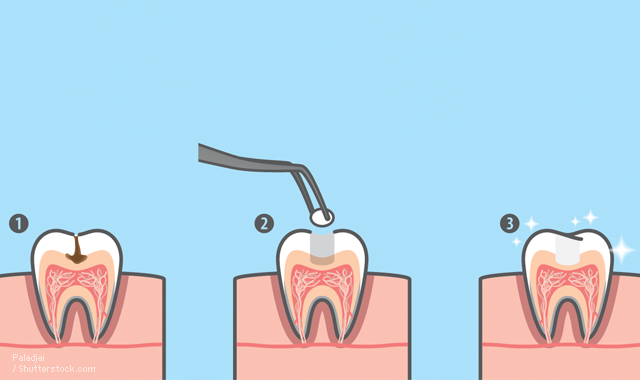How scientists are turning teeth into drugs
Recurrent caries is still a common problem - here’s how one team is trying to prevent them.

Caries filling has come a long way in the last decade. New materials and technologies have made it easier than ever to create a great-looking smile. But they’re still not perfect.
One research team at the University of Toronto is trying to fix that. A big problem with fillings is bacteria, which can burrow into restorative materials and cause recurrent caries. Overall, recurrent caries affects a staggering 100 million patients in the United States, at a cost of $3.4 billion.
The team’s solution is nothing new, an antibacterial filling material. But other antibacterial fillings have run into the problem of longevity - to really be effective, they would need to maintain their antibacterial properties for an entire lifetime.

Benjamin Hatton of the Materials Science and Engineering department says that “Adding particles packed with antimicrobial drugs to a filling creates a line of defense against cavity-causing bacteria. But traditionally there’s only been enough drug to last a few weeks.”
“We know very well that bacteria specifically attack the margins between fillings and the remaining tooth to create cavities,” adds co-author Yoav Finer. “Giving these materials an antimicrobial supply that will last for years could greatly reduce this problem.”
Related article: Osteoporosis meds and implants are a bad combination
Hatton, along with others, came up with a novel solution the problem. Utilizing a type of scaffolding known as mesoporous silica nanoparticles (MSNs), the team was able to create a filling that self-assembled the antimicrobial drug octenidine dihydrochloride, or OCT. The combination of silica glass and drugs maximized drug density- over 50 times the amount of drug can be packed into the material compared with others. This allows OCT to slowly diffuse over the course of years.
OCT is used in other oral products like mouth washes and topical antiseptics. It’s also important to note that OCT fulfills the need to be wary of creating an antibiotic resistance - it is an effective broad-spectrum antibiotic that has no known formation of resistance.
The team’s next goal is to test their new material in fillings in the real world, observing how the harsh environment of saliva and bacteria will affect the material.
Reference
“Drug self-assembly for synthesis of highly-loaded antimicrobial drug-silica particles,” Published in Scientific Reports,DOI: 10.1038/s41598-018-19166-8
Henry Schein Now Exclusive Distributor of Curodont Remineralization Solution to DSOs
September 19th 2024The company announced it has reached an agreement with vVARDIS to serve as the exclusive distributor of their drill-free Curodont™ Repair Fluoride Plus product to larger dental service organizations in the U.S.
University of Texas Health Science Center San Antonio to Launch Center for Regenerative Sciences
June 17th 2024The center aims to translate preclinical discoveries into therapies for dental and craniofacial diseases, leveraging the school’s expertise in stem cell-based treatments and 3D printing technologies.